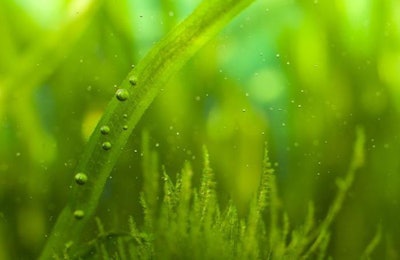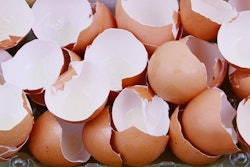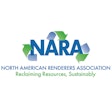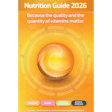
Protein derived from plants may soon play a large role in pet food, according to an expert in the field.
Dr. Fred van de Velde, expertise group leader in protein functionality for NIZO Food Research BV, analyzed potential future sources of protein for pet food as part of Petfood Forum 2017 in Kansas City, Missouri. Van de Velde spoke on April 5.
As with the food industry, the pet food industry will need to adjust as the world’s population continues to grow, van de Velde said. By 2050, more than 9 billion people will require 60 percent more food than the world currently produces to be fed. This crunch means the demand for animal protein will likely take away possible ingredients for pet food.
Although this seems challenging, the pet food industry is uniquely positioned to take advantage of emerging proteins because new protein sources are not generally introduced in high-end, human consumption applications. This means new protein sources are likely to be used in pet food first.
Established and emerging plant-based protein sources
Plant-based proteins are already widely used in human and animal nutrition. Many of those protein sources began as byproducts of other food production, and have since become valuable parts of the food supply. Those sources are: soybeans, peas, lupin beans, potatoes, wheat and corn. They are available in large quantities in a variety of styles.
When looking for new protein sources, it’s important to consider the sustainability of the product in the long term. Van de Velde said this goes beyond environmental sustainability to becoming a question of continued availability of the product as it rises in importance in the food supply. He mentioned whey protein – formerly a byproduct of cheese production – as an example of how popularity as an ingredient can make it harder for the protein source to be available in the future. Whey protein is now a key ingredient in infant formula and sport supplements, meaning it’s becoming harder for it to be included in pet food and animal feed due to human demand. Similar trends are playing out with soy press cake, potato proteins, grass and beet leaves, and brewer’s spent grains – all byproducts turned key plant-based proteins.
Proteins van de Velde called emerging and upcoming plant-based proteins are less used on the market and slowly being adopted, or they are still largely in the research stage. He said emerging crops are: faba beans, chickpeas, lentils, marrowfat peas, beans and rapeseed. Upcoming sources are: quinoa, duckweed, sunflower seeds, green leaves and microalgae.
Duckweed and algae
Van de Velde said the most important element of a novel protein source is sustainability. Naturally, plant based proteins are superior to animal proteins in terms of water, land and energy needed to create proteins. However, the locality of the source – meaning how close it can be produced to where its consumed – and the growing season as well as the protein output per hectare of land should be considered as well. Plant proteins must also be further processed before consumption because they often lack necessary amino acids and carry anti-nutritional factors.
When using this criteria, two emerging protein sources are particularly interesting: duckweed, simple aquatic plants of the subfamily Lemnoideae; and algae.
Van de Velde said both protein sources are interesting because they can be grown on water and year-round in the right climates. Because of their habitat, both can thrive in areas that cannot grow other crops and, therefore, they will not compete for land with other agricultural activities.
Duckweed carries a higher amino acid concentration than other plant proteins and is comparable to animal proteins including fishmeal in terms of protein content. It has far more protein than soybean, canola and sunflower meal, as well. Cultivated duckweed can provide more than 20 metric tons of yield on a single hectare of land – 5 tons of which are protein – in a year. Soy yields only 3 tons. The disadvantage of duckweed is that it cannot be grown year round in cooler climates.
Algae, a wide range of photosynthetic aquatic organisms, are also appealing alternative protein sources for similar reasons to duckweed species. A single hectare of can produce more than 40 tons of protein. However, the cell walls of algal species are more durable than other plants, so more processing is needed to collect protein, and again, the proper environment is needed for year-round production.
Peas and legumes
Pulses – grain seeds of legumes, including dried beans, dried peas, chickpeas and lentils – are appealing because of their relatively high protein content and ability to be grown in a variety of climates.
Van de Velde said pulses are a potential replacement for soy in Europe, where soy must be imported from the Americas. Additionally, from a sustainability standpoint, pulses are advantageous because of their nitrogen-fixing property in soil.
Pulses also have greater levels of lysine, an essential amino acid humans must obtain from their diet, than soy. Protein output from different species varies, but the highest output from red lentils and faba beans is greater than 100 kilograms of protein for each ton of seed processed. Pulses can also be used to create a natural coloring ranging from green to red.
Specifically in pet food, pulse protein isolates can be used to create: cat milk, due to its emulsifying properties, lack of lactose and heat stability; both dry and soft kibbles, due to its high protein content; and dental sticks and chew bones, due to its high protein content and lack of starch.
Petfood Forum 2018
Petfood Forum 2017 was held April 3-5 in Kansas City, Missouri, USA. Petfood Forum 2018 will take place at the Kansas City Convention Center in Kansas City on April 23-25, 2018.
















